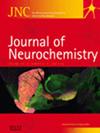GFAP 蛋白形态之谜:如何推动 GFAP 成为神经系统疾病的体液生物标记物
IF 4.2
3区 医学
Q2 BIOCHEMISTRY & MOLECULAR BIOLOGY
引用次数: 0
摘要
胶质纤维酸性蛋白(GFAP)是中枢神经系统中反应性星形胶质细胞增生的一种公认的生物标志物,因为它在脑损伤和各种神经系统疾病后水平升高。超灵敏低富集蛋白测量方法的出现大大提高了我们对各种神经系统疾病患者血清或血浆中 GFAP 水平的了解。临床研究表明,GFAP 有望成为诊断和预后的生物标志物,包括但不限于阿尔茨海默氏症患者。GFAP 表现出多种形式和结构,这里称为其蛋白形式的复杂性,包括构象动态、同工酶和翻译后修饰 (PTM)。在这篇综述中,我们探讨了 GFAP 蛋白形态的复杂性如何影响其检测,这可能会影响 GFAP 在不同生物液体中的不同诊断性能,并能为潜在的生物过程提供有价值的见解。此外,蛋白形态通常具有疾病特异性,我们的综述为开发新的 GFAP 检测方法提供了建议,并强调了应重点关注的领域,包括同工酶、PTM、排出机制、分解产物、高阶物种和相互作用伙伴。通过解决本综述中强调的知识差距,我们旨在支持 CSF 和血液中 GFAP 的临床转化和解释,以及可靠、可重复和特异性预后和诊断测试的开发。为了提高对疾病病理的理解并优化作为生物标志物的 GFAP,透彻了解生物流体中检测到的蛋白形式至关重要。本文章由计算机程序翻译,如有差异,请以英文原文为准。
The GFAP proteoform puzzle: How to advance GFAP as a fluid biomarker in neurological diseases
Glial fibrillary acidic protein (GFAP) is a well‐established biomarker of reactive astrogliosis in the central nervous system because of its elevated levels following brain injury and various neurological disorders. The advent of ultra‐sensitive methods for measuring low‐abundant proteins has significantly enhanced our understanding of GFAP levels in the serum or plasma of patients with diverse neurological diseases. Clinical studies have demonstrated that GFAP holds promise both as a diagnostic and prognostic biomarker, including but not limited to individuals with Alzheimer's disease. GFAP exhibits diverse forms and structures, herein referred to as its proteoform complexity, encompassing conformational dynamics, isoforms and post‐translational modifications (PTMs). In this review, we explore how the proteoform complexity of GFAP influences its detection, which may affect the differential diagnostic performance of GFAP in different biological fluids and can provide valuable insights into underlying biological processes. Additionally, proteoforms are often disease‐specific, and our review provides suggestions and highlights areas to focus on for the development of new assays for measuring GFAP, including isoforms, PTMs, discharge mechanisms, breakdown products, higher‐order species and interacting partners. By addressing the knowledge gaps highlighted in this review, we aim to support the clinical translation and interpretation of GFAP in both CSF and blood and the development of reliable, reproducible and specific prognostic and diagnostic tests. To enhance disease pathology comprehension and optimise GFAP as a biomarker, a thorough understanding of detected proteoforms in biofluids is essential.image
求助全文
通过发布文献求助,成功后即可免费获取论文全文。
去求助
来源期刊

Journal of Neurochemistry
医学-神经科学
CiteScore
9.30
自引率
2.10%
发文量
181
审稿时长
2.2 months
期刊介绍:
Journal of Neurochemistry focuses on molecular, cellular and biochemical aspects of the nervous system, the pathogenesis of neurological disorders and the development of disease specific biomarkers. It is devoted to the prompt publication of original findings of the highest scientific priority and value that provide novel mechanistic insights, represent a clear advance over previous studies and have the potential to generate exciting future research.
 求助内容:
求助内容: 应助结果提醒方式:
应助结果提醒方式:


